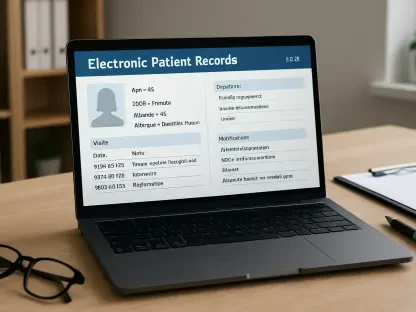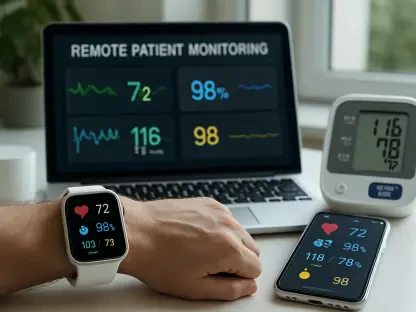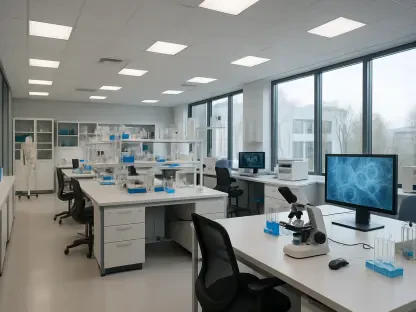I’m thrilled to sit down with James Maitland, a renowned expert in healthcare mergers and acquisitions with a deep understanding of antitrust regulations and the competitive landscape of the U.S. healthcare industry. With a particular focus on home health and hospice services, James has been closely following the high-profile merger between UnitedHealth and Amedisys. Today, we’ll dive into the intricacies of this $3.3 billion deal, exploring the regulatory hurdles, the recent settlement with the Department of Justice, and what it means for competition and vertical integration in healthcare. We’ll also touch on the broader implications for the industry amidst political transitions and financial pressures.
Can you give us a broad overview of the UnitedHealth and Amedisys merger, including when it kicked off and the financial scope of the deal?
Absolutely, Jan. This merger was first proposed back in January 2023, and it’s valued at around $3.3 billion. It’s a significant move by UnitedHealth to acquire Amedisys, one of the largest home health and hospice providers in the U.S. The goal here is to bolster UnitedHealth’s presence in a growing sector, but it’s been a rocky road due to regulatory scrutiny over competition concerns.
What were the primary issues the Department of Justice flagged when they first reviewed this merger?
The DOJ was very concerned about the potential for this merger to drastically reduce competition in the home health and hospice markets. They argued that if UnitedHealth absorbed Amedisys, it could control a dominant share—30% or more—in several states, and even enter new markets for the first time. Their lawsuit last November highlighted hundreds of local markets where competition could be stifled, making the deal presumptively illegal under antitrust laws.
How did those competition concerns from the DOJ affect the timeline for this merger?
The DOJ’s pushback significantly delayed the process. Originally proposed in early 2023, the merger faced a lawsuit by November of that year, effectively putting it on hold. The scrutiny over competition meant the companies had to negotiate and revise their plans repeatedly. Even with the recent settlement, experts suggest we might not see a closure until 2026, pending judicial approval and other regulatory steps.
Could you walk us through the key elements of the settlement announced recently between UnitedHealth, Amedisys, and the DOJ?
Sure. The settlement, disclosed just last Thursday, is a major step forward. It requires UnitedHealth and Amedisys to divest at least 164 home health and hospice sites to get the DOJ’s blessing. Additionally, there are stipulations like offloading stakes in certain joint ventures and providing support to the buyers of the divested locations to ensure they can compete effectively. It’s one of the largest divestitures of outpatient healthcare services in a merger challenge, according to the DOJ.
Why is the divestiture of these 164 sites so critical, and who is stepping in to acquire them?
The divestiture is crucial to preserve competition in the affected markets, particularly in the southeast where UnitedHealth already has a strong presence. By selling off these sites, the deal aims to prevent a monopoly-like situation in home health and hospice care. Two midsize operators, BrightSpring Health Services and Pennant Group, are acquiring these locations. BrightSpring is reportedly investing between $200 and $300 million, while Pennant’s investment is around $100 million.
What role do you see BrightSpring and Pennant playing in maintaining a competitive balance in these markets?
BrightSpring and Pennant are already established players in the home health and hospice space, so they’re well-positioned to take over these divested assets and keep the competitive dynamics intact. Their involvement ensures that there are still multiple providers in the overlapping markets with UnitedHealth, preventing a single entity from dominating. The settlement also includes support mechanisms to help these companies succeed, which is a positive step for maintaining patient choice and price competition.
The settlement includes additional measures like monitoring divestiture plans and supporting the acquired clinics. Can you explain why these conditions were necessary?
These measures are about ensuring the divestitures aren’t just a formality but actually result in viable competition. Monitoring ensures that UnitedHealth and Amedisys follow through on their commitments, while support for the clinics acquired by BrightSpring and Pennant—whether through transitional services or other resources—helps them establish a foothold quickly. It’s also about protecting vulnerable patients and the workforce, like nurses, by maintaining quality and wage competition in these markets.
There’s some skepticism that this settlement might not fully address the DOJ’s original competition concerns. What’s your perspective on whether it goes far enough?
I think there’s a valid point to the skepticism. The DOJ’s initial lawsuit was sweeping, identifying nearly 800 markets where competition could be harmed. This settlement, while significant with 164 divestitures, doesn’t cover all those areas. It’s a compromise, and while it does address key regions, particularly in the southeast, it may fall short of fully remedying the broader anticompetitive risks outlined initially. That said, it’s a practical step forward under the current regulatory climate.
How might the transition from the Biden to the Trump administration impact the terms or enforcement of this settlement?
Political transitions can definitely influence regulatory approaches. The Biden administration took a hardline stance on antitrust, as seen in the initial lawsuit. The Trump administration, generally perceived as more business-friendly, might have contributed to a settlement that’s less stringent than what was originally sought. Moving forward, enforcement could be less aggressive, though the core terms of this settlement are likely to stick once judicial approval is secured.
Earlier divestiture proposals by UnitedHealth and Amedisys were turned down by the DOJ. What do you think made this latest settlement more acceptable?
The previous plans, including one involving a different buyer last summer, were deemed inadequate by the DOJ, partly due to concerns over the reliability of the acquiring entity. This latest settlement seems to have gained traction because BrightSpring and Pennant are established, credible players in the industry. Additionally, the inclusion of supportive measures and monitoring likely reassured regulators that the divestitures would genuinely preserve competition, rather than just being a token gesture.
Given UnitedHealth’s challenging year with high medical costs and public scrutiny, how does reaching this settlement impact their current position?
This settlement is a bit of a bright spot for UnitedHealth amidst a tough year. They’ve been grappling with soaring medical spending in their insurance business and facing criticism over their practices. Resolving this merger issue with the DOJ removes a significant source of regulatory uncertainty that’s been hanging over them for over two years. It’s a morale boost and allows them to focus on integrating Amedisys and addressing other operational challenges.
Analysts suggest Amedisys will only modestly contribute to UnitedHealth’s earnings. Why, then, is this merger still a strategic priority for them?
Financially, Amedisys might not be a game-changer in terms of immediate earnings, but strategically, it’s a critical piece of the puzzle. Home health and hospice care are growth areas, especially with an aging population. For UnitedHealth, acquiring Amedisys strengthens their ability to offer low-cost, convenient care options, which can reduce hospital readmissions and improve outcomes. It’s also about data—gaining insights into patients’ lives outside clinical settings to better tailor preventive care.
How does this acquisition align with UnitedHealth’s broader push towards vertical integration in healthcare?
Vertical integration is at the heart of UnitedHealth’s strategy, combining insurance with care delivery. By acquiring Amedisys, they’re deepening their control over home-based care, which complements their insurance arm. This allows them to steer members toward in-house, cost-effective services, essentially paying themselves for care while managing expenses. It also provides valuable data for programs like Medicare Advantage, where understanding patient needs can drive reimbursement and preventive strategies.
Looking ahead, what is your forecast for the future of competition in the home health and hospice sector following this deal?
I think the sector will remain dynamic, but there are challenges on the horizon. This merger, even with the divestitures, signals a trend of consolidation among major players like UnitedHealth, which could squeeze smaller providers if not carefully monitored. BrightSpring and Pennant stepping in helps, but the concentration of power in vertically integrated giants might still impact pricing and access in some markets. I expect regulators to keep a close eye on this space, and we could see more innovative partnerships or new entrants trying to fill gaps, especially as demand for home-based care continues to grow with demographic shifts.









